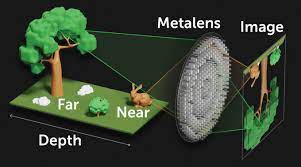
Breaking News
 Harbor Freight Coverpro 12x20 made into a Metal Building part 2
Harbor Freight Coverpro 12x20 made into a Metal Building part 2
 Brian Cole BUSTED, Halle Berry NUKES Newsom + Candace REJECTS TPUSA Challenge...
Brian Cole BUSTED, Halle Berry NUKES Newsom + Candace REJECTS TPUSA Challenge...
 I spent my Thanksgiving in the emergency rom... Medical emergencies can pop up at any time.
I spent my Thanksgiving in the emergency rom... Medical emergencies can pop up at any time.
 The "Golden Age" of Job Layoffs?
The "Golden Age" of Job Layoffs?
Top Tech News
 Build a Greenhouse HEATER that Lasts 10-15 DAYS!
Build a Greenhouse HEATER that Lasts 10-15 DAYS!
 Look at the genius idea he came up with using this tank that nobody wanted
Look at the genius idea he came up with using this tank that nobody wanted
 Latest Comet 3I Atlas Anomolies Like the Impossible 600,000 Mile Long Sunward Tail
Latest Comet 3I Atlas Anomolies Like the Impossible 600,000 Mile Long Sunward Tail
 Tesla Just Opened Its Biggest Supercharger Station Ever--And It's Powered By Solar And Batteries
Tesla Just Opened Its Biggest Supercharger Station Ever--And It's Powered By Solar And Batteries
 Your body already knows how to regrow limbs. We just haven't figured out how to turn it on yet.
Your body already knows how to regrow limbs. We just haven't figured out how to turn it on yet.
 We've wiretapped the gut-brain hotline to decode signals driving disease
We've wiretapped the gut-brain hotline to decode signals driving disease
 3D-printable concrete alternative hardens in three days, not four weeks
3D-printable concrete alternative hardens in three days, not four weeks
 Could satellite-beaming planes and airships make SpaceX's Starlink obsolete?
Could satellite-beaming planes and airships make SpaceX's Starlink obsolete?
Record-breaking camera keeps everything between 3 cm and 1.7 km in focus

A shallow depth of field, for example, would keep the subject sharp but blur out much of the foreground and background. Now, researchers at the National Institute of Standards and Technology have taken inspiration from ancient trilobytes to demonstrate a new light field camera with the deepest depth of field ever recorded.
Trilobytes swarmed the oceans about half a billion years ago, distant cousins of today's horseshoe crabs. Their visual systems were quite complex, including compound eyes, featuring anywhere between tens and thousands of tiny independent units, each with its own cornea, lens and photoreceptor cells.
One trilobyte in particular, Dalmanitina socialis, captured the attention of NIST researchers due to its unique compound eye structure. Fossil record examination indicates that this little guy had double-layer lenses throughout its visual system, unlike anything else in today's arthropod kingdom, and that the upper layers of these lenses had a bulge in the middle that created a second point of focus. That meant Dalmanitina socialis was able to focus both on the prey right in front of it and the predators that might be approaching from farther off.
The research team decided to see whether it could apply this kind of idea to a light field camera. Where regular cameras basically take in light and record color and luminance information across a two-dimensional grid, light field cameras are much more complex, encoding not just color and luminance, but the direction of each ray of light that enters the sensor.

 First totally synthetic human brain model has been realized
First totally synthetic human brain model has been realized Mach-23 potato gun to shoot satellites into space
Mach-23 potato gun to shoot satellites into space

